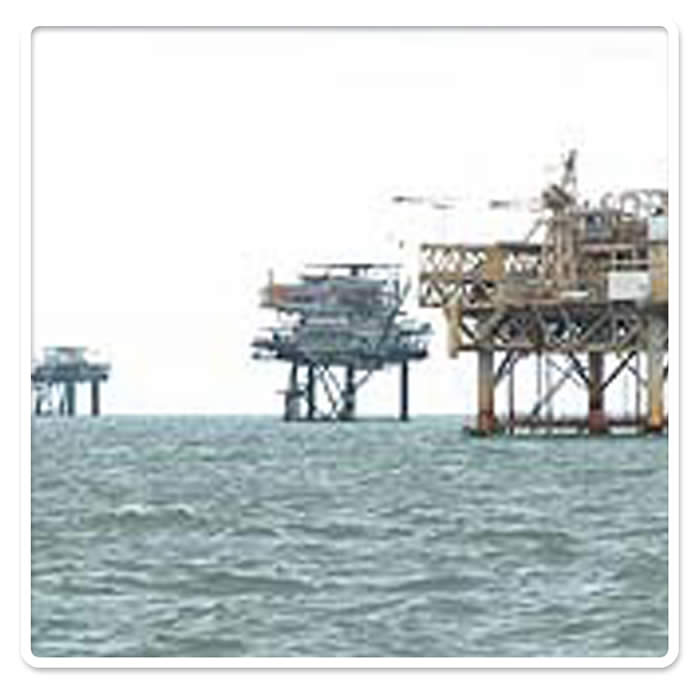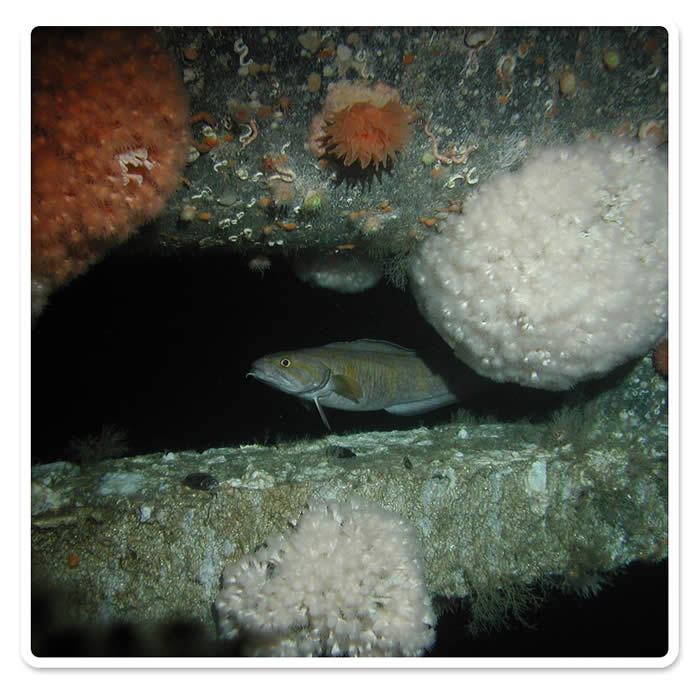Oil and gas
 Around the shallow rigs of the Gulf of Mexico (29, 80 and 125 m), the slow leakage of hydrocarbons and discharge of drill cuttings and muds has increased the toxicity of the surrounding sediment. Similar effects have been observed in the drill cuttings and muds surrounding some rigs in the North Sea. These effects could be reduced by re-injecting drilling by-products back into the well. However, in the immediate area, the effects of toxins can be lethal to many species with impacts such as reductions in species richness and infaunal abundance extending as far as 6-10 km from the platform. Mobile species are usually less affected by toxins with only limited effects observed in pelagic fishes and mobile invertebrates. Around the shallow rigs of the Gulf of Mexico (29, 80 and 125 m), the slow leakage of hydrocarbons and discharge of drill cuttings and muds has increased the toxicity of the surrounding sediment. Similar effects have been observed in the drill cuttings and muds surrounding some rigs in the North Sea. These effects could be reduced by re-injecting drilling by-products back into the well. However, in the immediate area, the effects of toxins can be lethal to many species with impacts such as reductions in species richness and infaunal abundance extending as far as 6-10 km from the platform. Mobile species are usually less affected by toxins with only limited effects observed in pelagic fishes and mobile invertebrates.
 The ocean currents in the deep-waters surrounding deep-sea rigs would likely disperse many contaminants, diluting the impact on deep-sea species and some species thought to be highly sensitive to drilling discharges may in fact show some resilience. For example, the cold-water coral Lophelia pertusa has been found growing on oil rigs in the North Sea. The majority of colonies discovered on these rigs are in good condition. However, those observed growing close to discharge chutes have shown signs of contamination with some colonies suffering upwards of 30% polyp mortality. It is probable that any discharges from deep-sea rigs at the surface or in the water column would disperse in the surrounding ocean, but discharges close to the seafloor may accumulate around the base of the rig due to the low current energy and slow sedimentation rates in the deep sea. If discharges do occur close to the seafloor, it is likely that smothering and potential mortality to epibenthic species such as corals would occur. The fundamental differences between shallow and deep water ecosystems increase the need for research on the impacts of hydrocarbon exploitation in deeper waters, yet it is likely that the dispersal capability of the deep-ocean means these areas would be less affected by hydrocarbon exploitation than those in shallower water. The ocean currents in the deep-waters surrounding deep-sea rigs would likely disperse many contaminants, diluting the impact on deep-sea species and some species thought to be highly sensitive to drilling discharges may in fact show some resilience. For example, the cold-water coral Lophelia pertusa has been found growing on oil rigs in the North Sea. The majority of colonies discovered on these rigs are in good condition. However, those observed growing close to discharge chutes have shown signs of contamination with some colonies suffering upwards of 30% polyp mortality. It is probable that any discharges from deep-sea rigs at the surface or in the water column would disperse in the surrounding ocean, but discharges close to the seafloor may accumulate around the base of the rig due to the low current energy and slow sedimentation rates in the deep sea. If discharges do occur close to the seafloor, it is likely that smothering and potential mortality to epibenthic species such as corals would occur. The fundamental differences between shallow and deep water ecosystems increase the need for research on the impacts of hydrocarbon exploitation in deeper waters, yet it is likely that the dispersal capability of the deep-ocean means these areas would be less affected by hydrocarbon exploitation than those in shallower water.

|
